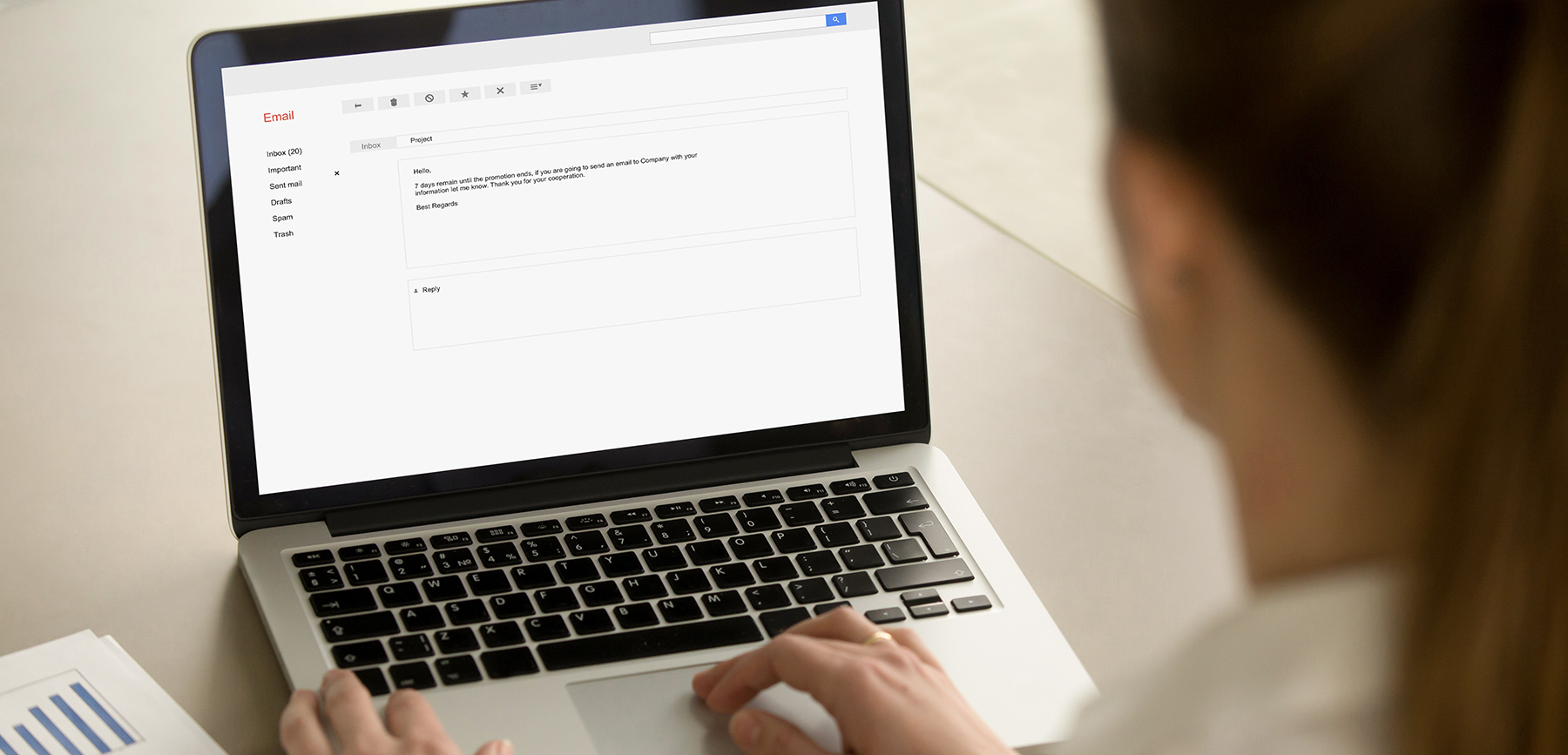
Is Your Website Holding Back Your Business?: A Strategic Guide to Recovery
Businesses relying on an outdated website could be losing customers before they even engage. With digital marketing expectations consistently growing, what perhaps worked for your website just a few years ago no longer holds up against modern design, speed and usability standards.
According to Red Website Design, 75% of users make judgments about a business based on its website design. This process happens nearly instantly, as visitors tend to form an opinion about a site’s visual appeal in just 0.05 seconds.
No matter the product or service that you provide, your website has an ability to play a key role by driving conversions 24/7. Ultimately, it serves as a brand ambassador, and in certain cases, your website may be the only point of contact between your business and a potential consumer. However, if it appears outdated, it might be hurting you more than helping you.
Businesses should consider a website redesign if their site appears outdated or if they have been patching up minor issues for several years rather than implementing a needed full-blown change. A redesign gives businesses a chance to further align their website with their brand, while also creating a more seamless user experience (UX) that will increase trust and reliability among customers.
Here’s a look at how to identify an outdated site, what it could be costing your business, ways to modernize it and why an optimized website can help improve your bottom line.
The Hidden Costs of an Outdated Website
It’s not hard for potential customers to tell when a website looks old. If it does, not only is your website not aesthetically pleasing, but it is also likely damaging your credibility, hurting your chances to appear higher in search rankings and deterring customers from utilizing your business. Red Website Design notes that 57% of internet users will not recommend a business that they believe has a poorly designed website.
Beyond appearance, an outdated website can also run into several technical issues, including slow load times, which can lead to a higher bounce rate, or confusing navigation and broken forms, which can contribute to additional lost leads.
In turn, your website may rank lower in search results if it’s not up to date or has other technical SEO issues. Potential and even existing consumers could also lose trust in your business if it appears behind the times.
When put together, these small factors can prove detrimental. An outdated website can have a direct correlation to lower conversions, potentially pushing customers toward competitors who might provide them with a more modern alternative. According to a 2024 survey from Hosting Advice, 75% of consumers have skipped an online purchase due to an outdated or unprofessional-looking website.
Lastly, security risks can also stem from an outdated website. Older platforms and plugins can be devoid of modern security measures, putting customer information and your own business data in danger. Any kind of security issue can quickly drive away customers due to a lack of trust. Hosting Advice also notes that 93% of consumers have expressed concerns over information security when coming across poorly designed websites.
Warning Signs That Your Website Is Hurting More Than Helping
Businesses should frequently monitor their website to be sure that all information and functionality is up to date and optimized. There are multiple red flags that can signal a company website is outdated, including:
- An outdated design – Popular styles often change, so what looks good a few years ago may now appear old and untrustworthy.
- A lengthy load time – Potential customers often abandon slow-loading sites quickly, as 40% of visitors will leave a website if it takes longer than three seconds to load, according to browserstack.com.
- It’s difficult to update content – If small changes are taking a lot of time and effort due to an old and slow website, time and money is likely being wasted.
- It’s not mobile-friendly – Most successful websites will have an appealing mobile landing page that doesn’t require users to zoom in order to find information. According to Marketing Scoop, mobile-friendly websites have a 15% average higher conversion rate. Meanwhile, just a one-second delay in mobile load times can impact conversion rates by up to 20%.
- SEO performance is stagnant or declining – A decline in search rankings could signal that your landing pages or website as a whole has an outdated structure.
Warning signs aren’t always required for businesses to implement a redesign. A website can also be updated during a product, service or brand repositioning, before or after the launch of a new product or service, or simply when a business is trying to capitalize on new trends within its industry.
Why Poor UX Impacts Conversions and Trust
UX plays a vital role at multiple touchpoints for a business. One of the most critical channels during the customer journey is a company’s website, which can essentially act as a salesperson.
If visitors can’t find what they are looking for within a few seconds, they’re likely to leave. According to Red Website Design, 90% of internet users claim to switch to a competitor because of poor UX.
To help improve UX, businesses can conduct research through methods like usability testing where you observe users interacting with your website, or user surveys where you ask users about their experience on your website.
A website that delivers quality UX should guide users through the buying process seamlessly, and a smooth customer journey can ultimately lead to greater trust and consumer retention.
What Customers Expect From Your Website
Consumers expect a seamless experience when utilizing digital channels. To ensure this, your website should maintain:
- Quality speed and performance with instant loading and seamless browsing
- Responsiveness that is flawless across devices and screen sizes
- Visual clarity with a clean design, intuitive layout and appealing, on-brand visuals, with 94% of first impressions for website users being design-related, according to Red Website Design
- Interactivity when it comes to things like forms, live chat and clickable calls-to-action (CTAs), with Red Website Design noting that 70% of small business websites lack clear CTAs
Meeting these expectations can help keep your business competitive within its industry. Your website and the content that appears on it aren’t guaranteed to help you outrank your competition, but optimizing it will put you in a better position to acquire more customers.
Results That Can Stem From a Website Redesign
Once a redesign is complete, businesses should begin seeing several benefits arise from what they have implemented, including:
- Increased traffic thanks to SEO improvements and faster load times
- Higher conversions thanks to a better overall UX that can lead to more form fills, calls or purchases
- Improved brand perception thanks to a modern-looking site that builds trust and displays your business as credible and current
- Better analytics that will offer detailed insights for smarter future decisions
According to Hosting Advice’s survey, 92% of consumers implied increased confidence in the products or services of a business whose website functions smoothly. Ultimately, businesses need to remember that a website change is far from just a one-time thing. In today’s age, websites are one of the most vital parts of business success and require frequent attention, updates and refinement. Being ahead of the game with updates and redesigns can help a company remain ahead of its competitors.
Recovery Road Map: Things to Focus on During the Redesign Process
There are several steps that businesses should take to replace their outdated website with an updated, more modern version, including:
1. Giving your current website an audit – Analyze what’s still working and what might be broken or outdated, both visually and when it comes to written content. Tracking key performance indicators (KPIs) regularly and metrics like bounce rate, load time, session length, mobile responsiveness and conversion rate can help identify areas that may need improvement.
2. Defining your website goals – List what you hope to achieve through a redesign, such as more leads, better branding or higher search ranking. It is also beneficial to put yourself in your customer’s shoes, seeing what might help make their journey more convenient.
Conversion goals can be set up in Google Analytics, while companies can also use heatmaps or other behavior tools to further understand how potential buyers may be engaging with their website to help solidify their objectives. Another helpful strategy can be analyzing what might be working for your competitors by visiting their websites and seeing what kind of experiences they provide.
3. Choosing the right tools – Once you decide how you will redesign your site, be sure to focus on important UX elements that can be implemented from the chosen website tool.
4. Creating an aesthetically-pleasing look – Businesses should look to make their website more aesthetically pleasing by investing in a clean and modern design. Homepages should communicate what your brand is about, the products or services that you offer and why it matters.
5. Improving website functionality – Beyond looks, businesses should also seek to improve functionality, ensuring a seamless experience for consumers. High-traffic, high-conversion pages like your homepage, landing pages and pricing pages should be prioritized.
Ultimately, navigation should be simplified through clear labels, grouped content and standard structures. Your website’s most important information should never be more than a couple of clicks away. In addition, compressing images, downsizing JavaScript files or leveraging browser caching can help improve site load times.
6. Optimizing your website to today’s SEO standards – An additional element to consider when implementing a website redesign is how to optimize for today’s SEO standards. This includes aligning your site with things like mobile-first indexing, core web vitals such as Largest Contentful Paint (LCP) and Cumulative Layout Shift (CLS), secure web protocols like having HTTPS, and structured data and schema.
Other technical SEO issues like indexability, crawlability and broken links should also be addressed. Doing so will give your website a better chance to become more visible in the digital space. In a report from review42.com, nearly 68% of marketers note improved organic rankings after implementing user-focused website designs.
7. Producing quality content and applying CTAs – Content that appears on a redesigned website should be clear, concise and SEO friendly, while answering questions and solving problems that potential customers might have. A company’s brand should be reflected in this content with a consistent voice and tone. Meanwhile, landing pages should have clear CTAs with buttons that visually stand out and are easy to find.
8. Implementing brand development – During a redesign, businesses should focus on making sure that their new-look website is a reflection of their brand. This includes colors, fonts and voice, while messaging across your site should remain consistent. Your brand should be innovative and customer-centric, building trust among those who visit your website.
9. Ensuring your website displays trustworthiness – Trust signals, including things like an SSL certificate, certifications, customers reviews or testimonials, privacy policies and terms of use, should be prominently displayed throughout your updated website. This helps give your company more credibility while building confidence among users that your business will not be threatened by any security breaches.
10. Thoroughly testing the website – As with any change, it’s important to test out the modifications that have been made to a website in order to ensure it performs well across all platforms, browsers and devices. It is also beneficial to run minor experiments or updates to see what works, as a full redesign might not always be necessary.
Real-World Examples of the Benefits of a Website Redesign
Multiple businesses have seen success by redesigning their website in recent years. Parkway Physiotherapy, a local healthcare provider in British Columbia, Canada, sought to improve the design of its old website and drive more conversions. The firm aimed to put itself in the patient’s shoes, redesigning to create a better UX featuring a clear and easy-to-navigate design, as well as making it easier to find specific service pages that might better answer consumers’ questions with relative content.
In order to do this, Parkway Physiotherapy made numerous changes, including a new headline on its homepage, adding patient reviews, community awards and CTAs, and redesigning other text and graphics. The results were well worth it, as Parkway Physiotherapy saw a 203% increase in conversions following the redesign thanks to CTAs like booking an online appointment, clicking a “call now” button and submitting a contact form.
On a larger scale, Mattress Firm, one of the leading mattress retailers in the United States, also ventured into a website redesign in recent years. With concerns regarding low conversion rates, Mattress Firm partnered with UpTop to address issues with its outdated site.
The biggest change came from the implementation of more category landing pages to allow consumers to find products more easily. The site’s shopping cart experience was also improved to streamline the checkout process. The immediate results were highly beneficial, as Mattress Firm saw a 43% increase in conversion rate, while page abandonment dropped by 325%.
Best Version Media Can Help Your Redesigned Website Thrive
Best Version Media can help drive more users to your redesigned website through our assistance with online presence. Between management of listings and reviews from one convenient dashboard, and geo-targeted display and social media ad campaigns, BVM can help more users find your new website thanks to increased online visibility.
Connect with BVM today to continue growing your business within the digital space through an effective marketing strategy.
Written by Cody Kluge
BVM Digital Content Specialist






